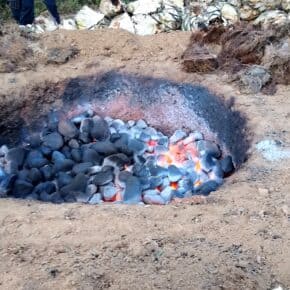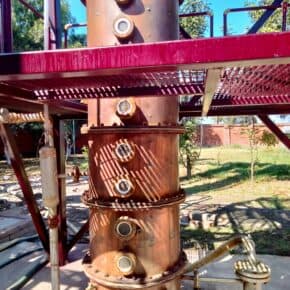What is mezcal ancestral? The ancestral category was created in an attempt to differentiate the mezcal producers who were adhering to the most old-fashioned and traditional processes. The category was enstated when the revised mezcal norm finally passed into law in 2017, after much controversy.
In order to label their mezcal as ancestral, producers must bake maguey (agave) in pit ovens. When it comes to milling the cooked agave they have two options: they may crush it with a large mallet (mazo in Spanish) or use a tahona, also known as a Chilean or Egyptian mill. While the types of oven and milling devices are limited, producers have a lot of leeway when it comes to different types of fermentation tanks. They can ferment in stone pits, dirt pits, tree trunks, wooden or clay containers, masonry tanks, or animal hides. Agave fiber may be included in the fermentation.
Ancestral mezcal must be produced in clay pot stills, which may have a clay or wooden montera. Agave fiber may be included in distillation.
A note on nomenclature: While “ancestral” producers must follow rigorous “traditional” practices, they do not actually need to have ancestors who were mezcaleros. As long as you are willing to squash your agave to pulp with a club or a stone wheel and adhere to all of the other old school practices delineated in NOM-070-SCFI-2016, you can make a mezcal and label it as ancestral.
Another key point (and one that we belabor often): Some producers who follow “ancestral” processes (and may have an actual ancestry of mezcal production) do not label their mezcal as ancestral, either because they are uncertified and selling or gifting it to their neighbors or because they have opted out of the norm and are exporting their mezcal as an agave spirit or a destilado de agave.













Leave a Comment